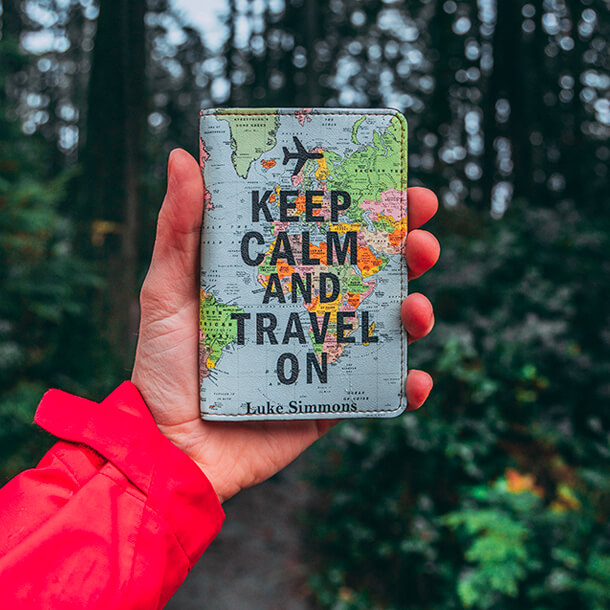If you are looking improve your landscape photography skills, spending time on the trail is often the best way to find new compositions and practice shooting in variable conditions.
However, with more people than ever spending time in the great outdoors, you might have noticed that the trails in local and national parks are becoming more and more crowded.
When you find yourself enjoying the trail with others, it is important to keep in mind that there are general etiquette guidelines that most experienced outdoor adventurers agree on.
These guidelines aren’t hard rules, but following them will make hiking more enjoyable for everyone on the trail.
They will also keep the places we love to photograph picture perfect for years to come.
9 Hiking Etiquette Tips:
If you got value from this article, please support my work by sharing it - or you can buy me a coffee.
I currently do NOT use affiliate links or receive compensation for products I recommend. I do this so my work stays honest and in line with my values. I only recommend gear that I personally use and believe is the best.
Know Who Has the Right of Way
There are three general guidelines pertaining to who should yield to who on the trail:

- Hikers passing hikers: Hikers going uphill have the right of way. This means that if you are hiking downhill, step to the side of the trail and wait for the approaching hiker to pass. The reason for this is that hikers going uphill are working harder and don’t want to lose momentum by stopping. Downhill hikers already have momentum on their side when they start hiking again. Also, uphill hikers have a more limited field of vision than uphill hikers, meaning they can’t see as much of their surroundings. This can make it harder for uphill hikers to find the best place to step off the trail to stop and wait for an approaching downhill hiker to pass.
- Hikers passing cyclists: Hikers have the right of way when passing cyclists. Cyclists are expected to stop and step to the side to allow hikers to pass. This is because cyclists move much faster than hikers and they can come up on hikers quickly before they even notice the bike approaching.
- Hikers passing horses: Hikers do not have the right of way when passing horseback riders, and they are expected to step aside when a horse is passing. This is because horses are large, unpredictable creatures that can be easily spooked. Most trail riders are not highly skilled equestrians. A hiker can get kicked or trampled if they don’t get far enough out of the way and a rider loses control of their horse.
Keep the Noise to a Minimum
In my opinion, you should behave in nature as if you were in an art museum or a house of worship.
You wouldn’t (hopefully) go into the Louvre or the Sistine Chapel and blast Spotify through your iPhone speakers. Nor would you engage in a rowdy conversation with your friends about the last episode of The Bachelor.
For many people, myself included, time spent outdoors is a spiritual practice.
When you go into what many people consider to be a sanctuary, it is important to show respect by minimizing noise when you are around other people.
Know How to Hike in a Group
When hiking in a group, walk single file to preserve the trail and reduce the erosion problems mentioned previously.
It also makes it easier for smaller groups and solo hikers to pass your group.
When there is someone trying to pass the group from behind, it is a common practice for the last hiker in the group yell “hiker back!” This lets everyone in the group know that they need to stop and step to the side.
Don't Leave Trash or Pet Waste on the Trail - Not Even Toilet Paper!
I think that this is one of the most important points on this list. It is also a key principle of Leave no Trace.
Seeing human trash in nature is one of the saddest things to me. Not only does it take away from the experience of being outdoors, but more importantly, it can harm wildlife and damage the environment.
While I’d say that most trash I see on the trail has been accidentally dropped, toilet paper is intentionally left behind by humans who don’t want to carry it.
While in Grand Teton National Park last summer, I learned that the park was having a problem with people not packing out their toilet paper.
Sure enough, I found used toilet paper EVERYWHERE along a popular trail. What a way to ruin such an incredible place…
My recommendation is to bring a roll of doggie waste/poop bags with you when hiking.
I always have a whole roll of them on me because they are very compact and light, and they work perfectly for waste (because that’s what they are made for).
You can toss your used toilet paper in one of these bags, tie it up, and pack it out to the trailhead where you can throw it away in a trash can - just as if you were cleaning up after your dog.
You can even buy biodegradable doggie waste bags, which are an even more environmentally friendly option.
Don’t Touch Cairns
Cairns are mounds or piles of rocks that have been stacked on top of each other. They are made by people to mark trails - usually ones that are harder to follow.
If you see a cairn on a trail, it usually a sign that you are going the right way (though you should always check your map to be sure).
Since cairns are trail markers, they should only be built by people who have authority to maintain the trail, like rangers and trail maintenance groups with permission to manage them.

Building or altering cairns can cause confusion for people who use them to help navigate in the backcountry.
While this definitely shouldn’t be your only means of navigation, they can be useful if you can't find the trail or unsure of the direction of your route.
Building your own cairn or adding to an existing one can also disrupt the natural aesthetic of the landscape.
Imagine if everyone wanted to build their own cairn on a trail that sees thousands of visitors every year? Not a good look.
Don’t Approach, Disturb or Feed Wildlife
This is another principle of Leave No Trace that is important to mention here.
Many of us have seen the videos of Elk and Bison goring people in some of our most popular national parks.
People either forget that wildlife is dangerous or they just don’t care when trying to get that perfect Instagram photo.
Always assume that wildlife can harm you if you get close, so keep your distance as much as possible and use telephoto lenses for your photography.

Also, when you feed wildlife, you can alter their behavior and damage their health in ways that can lead to their death.
One example of this is in bear country.
When bears consume human food, they learn to associate food with humans.
Bears, especially Black Bears, are typically shy and avoid humans, but this association causes them to become aggressive, sometimes leading to bear attacks. Sadly, when a bear attacks a human, it usually has to be euthanized.
This is why it is so important to use bear canisters and hang bear bags. Even innocently feeding the cute chipmunk who wants your granola bar can harm the creatures biology and behavior in a negative way.
If you care about the wild animals, don’t feed them.
Don’t Complain - Even If You Are Alone
If you are not enjoying your hike, I guarantee that nobody else will appreciate a complainer with a negative attitude.
It truly ruins the experience for everyone else. Most people suffer at least a little bit when they are out hiking, especially on a long day hike or backpacking trip, but this is the price you pay to experience beauty.
If you are hiking up a steep mountain and your feet are throbbing, focus on the incredible view and how lucky you are to be breathing.
Even if you are alone, focusing on what hurts and what is difficult will only make your hike more challenging.
Be Kind and Say Hello to Other Hikers
In a world where people are more divided and isolated than ever, the least we can do is be friendly and courteous on the trail.
Offer help if someone needs it.
Provide information about the trail conditions and water sources if someone asks for it.
Smile at people.
These aren’t rules, just something that makes the experience of hiking and being outdoors better.
It also can keep you safer.
The more you know about the trail, the better decisions you will make, such as turning around when needed. It can also be important if you get lost or injured.
The people you see and chat with on the trail will likely remember you if questioned by search and rescue crews.
Stay on the Trail
Hiking off a trail causes erosion and can damage delicate ecosystems.
This not only hurts the flora and fauna, but it can also take away from the environment's natural beauty.
This is especially true in places like the high alpine tundra, where delicate plants in this biome can take centuries to recover once destroyed (NPS).

In the Utah desert where there are many national parks, walking off trail can almost guarantee that you will step on biocrust, which takes decades to grow back once damaged.
%20(3).png)










